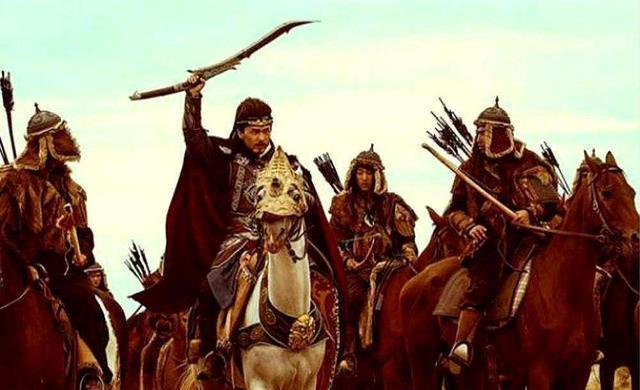Where did the Huns originate? Where did the Xiongnu, who had fought with the Han Dynasty for more than 130 years, end up?
In this article, I will talk to you about this topic.
The figure of the ancient Xiongnu has always accompanied the development of Chinese history, from the Warring States to the Han Dynasty, the Xiongnu were regarded as a major problem by the rulers. Many generals who resisted the Xiongnu also came into being at this time, including Wei Qing, who was unstoppable for thousands of miles, Huo Fuyi, who was named the champion Hou at a young age, and Ban Chao, who threw pens from Rong and Zhen to guard the border pass, and they all shone dazzling in the long river of history.

In the early years of the Han Dynasty in history, because it had just been established, there was not much strength to resist the Xiongnu in the north, and the entire period of the early Han Dynasty was basically fighting against the Northern Xiongnu.
After arriving at the Han Dynasty, the Xiongnu in the north were rarely mentioned, and where did the Xiongnu end up? Where did the mighty Huns originate?
According to the "Chronicle of History", the ancestors of the Xiongnu were the remnants of the Xia Dynasty, and in the process of westward migration, they integrated the people of the Yue clan, Loulan, Wusun and the twenty-six kingdoms next to them, and the simplest summary is that the original Xiongnu were assembled by some nomadic people living in the Eurasian steppe at that time. However, it was not until the Warring States period that it was called xiongnu, and it was not until the Qin Dynasty in the 3rd century BC that it was clearly recorded in Chinese chronicles."
Huns
"One.
At that time, the Xiongnu did not establish centralized power, and their economic and military strength was very different from that of the Central Plains. Its influence can only be counted as a tribal existence, and did not attract the attention of the rulers of the Central Plains Dynasty, so that the Xiongnu were given a good opportunity to develop, and until later the rulers were powerless, and could only adopt policies such as easing and marriage in exchange for peace.
The threat posed by the Xiongnu lasted for two or three centuries, until the Han Wudi Emperor Liu Che succeeded to the throne, sent soldiers to fight against the Xiongnu on a large scale, and expelled the Xiongnu, after which the hidden dangers of the Xiongnu were solved.
So where did the Huns, who once plagued the Central Plains, end up?
1. Return to the north
After being completely defeated by Emperor Wu of the Han Dynasty, many Huns returned to their original birthplace, which is now the Altai Mountains. Another part was forced to retreat to the area of present-day Mongolia. Even a small part crossed what is now Mongolia and even farther and colder north within today's Russia.
During the Han Dynasty, it also strengthened its control over the local area, and established some official positions such as Liliaodong Commandery and Liaodong Taishou to govern the Xiongnu who moved to the Daxing'anling area.
2. South Crossing
National integration is a means for rulers to obtain stable social development, and the main theme in history from beginning to end is the great integration of nationalities.
In ancient Chinese history, no matter how the feudal dynastic regime changed, the great integration of nationalities was the main theme of historical progress and has always run through the historical process.
Some Xiongnu chose to travel north, and some chose to go to the Han people, who were baptized by marrying han chinese, learning Chinese, wearing Han costumes, and receiving the baptism of excellent Chinese culture. Here, these Huns chose to multiply or live like the locals, and gradually became an integral part of the Han Chinese.
3. Moving west
Historically, the nomadic Huns were actually made up of various tribes.
After the Xiongnu regime was dismantled by the Han Dynasty, some tribes crossed south, some tribes returned to the north, and some Xiongnu chose to continue to walk west. These people chose to continue their nomadic lives in the countries along the Silk Roads, and some of them had the strength to go to today's Europe.
They measured the land of the time with their own footsteps. Some people even went to Persia and India, and lived a peaceful life on the western side of the continent, never disturbing the Central Plains Dynasty.
Whether it was for reasons such as the return of the south to the north or the westward migration, the Huns, who were once powerful in the steppe, no longer posed a threat to the Central Plains regime. From Qin Shi Huang repairing the Great Wall, to the generals of the Han Dynasty, they fought in blood. This nation, which had plagued the Central Plains for a hundred years, finally calmly disappeared into the long river of history. The Chinese nation is also moving towards a more prosperous and prosperous future.